


Framed or unframed, desk size to sofa size, printed by us in Arizona and Alabama since 2007. Explore now.
Shorpy is funded by you. Patreon contributors get an ad-free experience.
Learn more.

- Texas Flyer wanted
- Just a Year Too Soon
- WWII -- Replacing men with women at the railroad crossing.
- Yes, Icing
- You kids drive me nuts!
- NOT An Easy Job
- I wonder
- Just add window boxes
- Icing Platform?
- Indiana Harbor Belt abides
- Freezing haze
- Corrections (for those who care)
- C&NW at Nelson
- Fallen Flags
- A dangerous job made worse
- Water Stop
- Passenger trains have right of way over freights?
- Coal
- Never ceases to amaze me.
- Still chuggin' (in model form)
- Great shot
- Westerly Breeze
- For the men, a trapeze
- Tickled
- Sense of loneliness ...
- 2 cents
- Charm City
- What an Outrage
- Brighton Park
- Catenary Supports
Print Emporium
Tall Beer: 1900
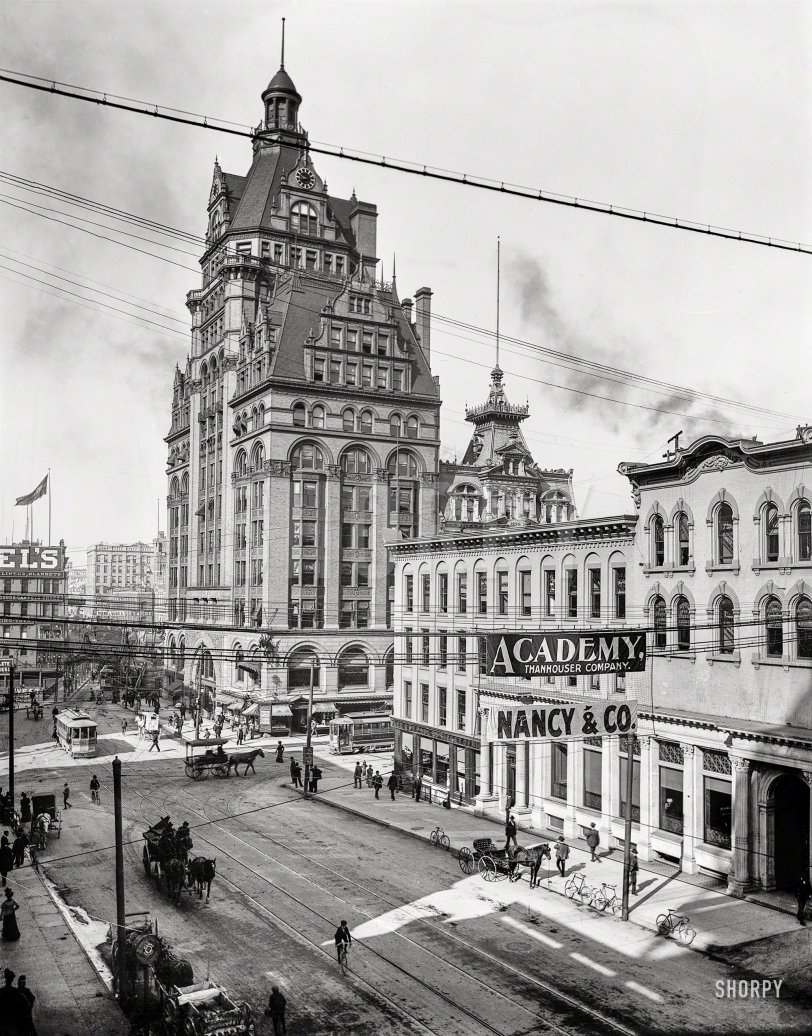
Milwaukee circa 1900. "Wisconsin Street and Pabst Building." The city's first skyscraper, completed in 1891, demolished 1981. 8x10 glass negative. View full size.
I was trying to understand....
I was trying to understand why I did not know that building. It was because it was so stripped down when it was torn down. I've lived in Milwaukee all of my life.
There was a period in the 70's and 80's when any older building was just torn down because it was old. We lost a beautiful railroad train station that was at the lakefront and many other buildings.
Another point or two...
Attached is a picture of the building that replaced the Pabst, taken from the south, pointing north. Some of the design themes of the original are evident in the new building. Also, I missed the Pabst sign in the lower left corner. It’s most likely at the entrance of a Pabst tavern, as all of the local breweries (5) had their own retail outlets. One other item of interest is the Milwaukee & St. Paul Ry. Ticket Office, across the street from the Pabst.
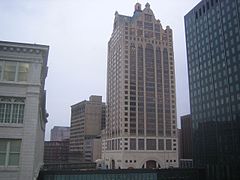
I live in Milwaukee and the view has changed...
but the intersection of Wisconsin and Water is still the heart of downtown. Yes, we mourn the loss of the building in this photo, but, by 1981, it was a sad caricature of its former self - whitewashed, amputated and deformed beyond recognition.
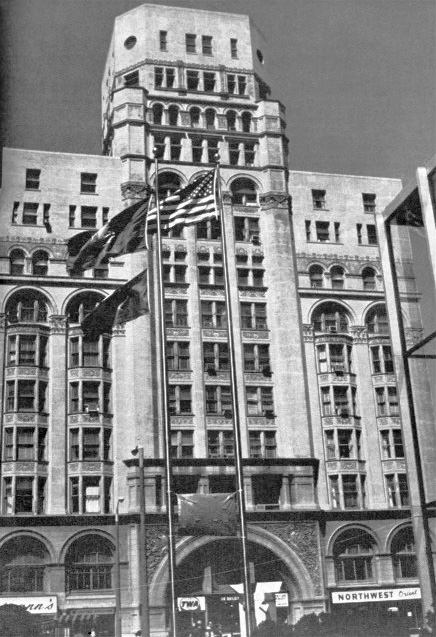
Here there be dragons?
Can we get a closeup of what appears to be a sculpture of a dragon at the top corner of the second floor of our skyscraper?
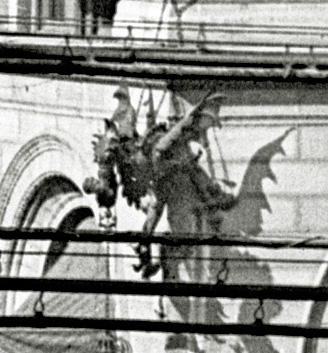
Question for vintage bicycle experts
In a number of Shorpy street scenes of this era, bicycles stand upright next to curbs (obviously, bike thieves were rare in those days). None are ever seen as having fallen over. I am curious if vintage bicycles had some kind of special kick-stand to keep them tight against the curb. Then again, they didn't have the suction caused by tractor semitrailers zooming along the streets.
[Here's a Shorpy example of how it was typically done using the pedals. In this Milwaukee photo, also note how high the curb is. -tterrace]
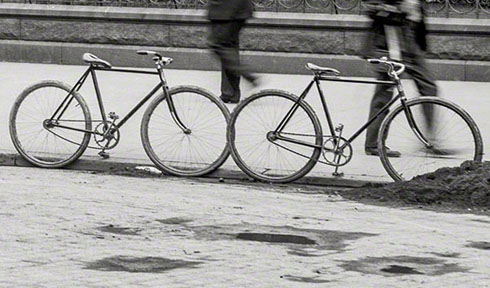
Bicycle Built for One?
Are my eyes deceiving me, or is the young man near the bottom of the photo riding a unicycle?
[No; the angle obscures the rear tire, besides, the handlebars are visible, -tterrace]
Also, thanks to kreriver for the interesting history lesson. I love stories like that, stories that most visitors or non-natives would never hear about a town.
Deja vu all over again
Although I'm not from Milwaukee (I live on the opposite side of the country), I recognized this street scene immediately. When Wells Fargo Bank and Norwest Bank merged, I was sent to Milwaukee as a network engineer to site survey buildings in Wisconsin and Illinois. One of the buildings was 100 E. Wisconsin -- the location of this building. A few months later I returned to convert the building to the Wells Fargo network.
I checked on Google Earth just to make sure!
Tale of two towns
A guy named Solomon Juneau is credited with founding Milwaukee. He developed the area between Lake Michigan (about a mile east of the Pabst Building) and the Milwaukee River, which is on the far side (west) of the building. A fellow by the name of Byron Kilbourn settled in and developed the area west of the river. If you can believe it, these two political powerhouses did not get along. So when Juneau built his streets to the river, Kilbourn, out of spite, offset his by about 100 feet or so from the center of Juneau’s. The net result was that when bridges were finally built they had to be angled (visible in image) to connect the streets. All of the river bridges in downtown Milwaukee have that feature.
Short-Sightedness
Why would they demolish such an iconic building?
[To make money from renting offices in a much larger modern building. - Dave]
Foamy environment
There's a lot going on in this picture! The crowd of people on the street, the streetcars, the really cool bridge, and all the aerial wires - the result of swift development of telegraph, telephone, and trolley and power wires - reveal a bustling excitement that was brewing in turn-of-the-century Milwaukee. I wonder if the brewery's founder's grand-daughter - who was vice-president of the company until 1894 - had anything to say about the building's design?
Silents, please
Edwin Thanhouser, manager of the Academy of Music, later went on to form one of the earliest motion picture studios, which produced over 1000 films from 1910 until it went kaput in 1918.
























On Shorpy:
Today’s Top 5